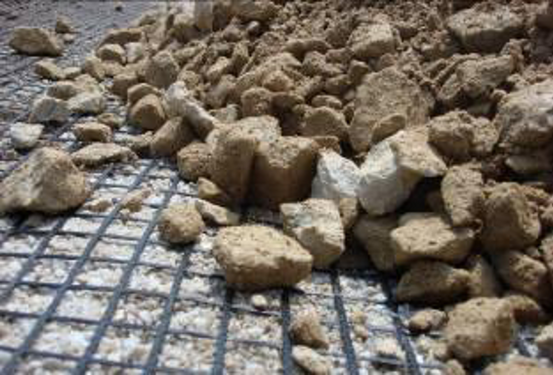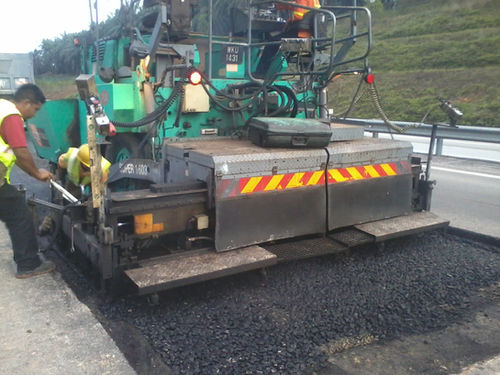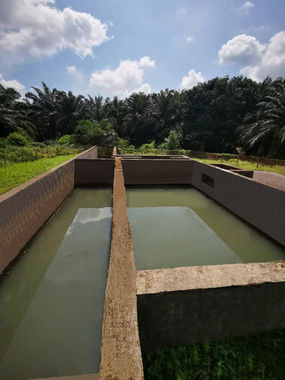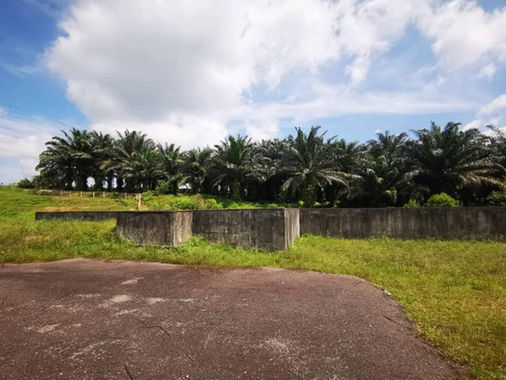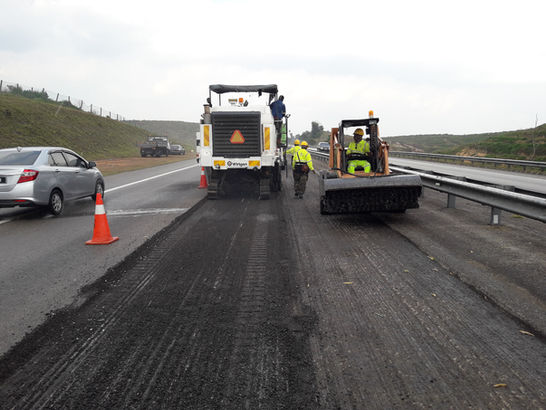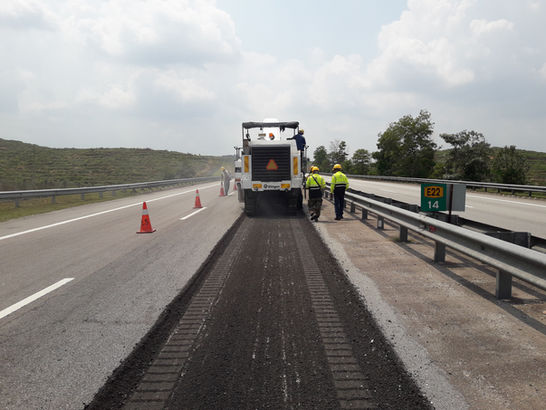PAVEMENT REHABILITATION WORKS USING CIPR METHOD ALONG SENAI – DESARU EXPRESSWAY (E22)
Roadbase Structure Reconstruction Method is the use of a combination of existing cement and crusher run (Roadbase strengthening). The main goal is to improve the life of the pavement structure by recycling existing basic road materials. The Cold In Place Recycle (CIPR) method involves the application of Cement-Bound Material (CBM) technology which is a mixture of existing cement and crusher run. The CIPR repair method is evaluated based on the density (during construction) and the performance of the structural strength of the repair (after construction).
ROUTE REPAIR WORKS WITH 'PGM-G' METHODS AT EAST BOUND PACKAGE 1 SENAI – DESARU EXPRESSWAY (E22)
PGM-G paving composites are made of mechanically bonded 100% PP continuous filament nonwoven reinforced by an alkali resistant glass filament grid. This method is suitable for a solution severe wear off and cracked road surface. The process include milling, PMB spraying, laying of PGM-G and laying of ACWC. Refer to above pictures for more info.
GEOGRID METHOD SENAI – DESARU EXPRESSWAY (E22)
Geogrid is a road base structure reconstruction method with the use of geogrid material and an existing crusher run to reinforce the road base. It can minimize the surface deformation and differential settlement.
POLLUTANT REMOVAL SYSTEM (PRS)
Mitigation system with the objective to eliminate potential adverse impacts to the water quality in Lower Layang Reservoir (LLR) in the event of a spillage of dangerous and hazardous chemicals from heavy transport vehicles travelling on the Expressway.
The spillage will be collected by the road surface drainage system which comprising of roadside drains and median drains along the expressway and channeled to a Pollutant Removal System.
The Pollutant Removal System essentially comprises the following components; each of which is designed with specific functions involving trapping and removing the particular type of pollutants including oil, grease, chemical and debris normally expected from surface runoff: -
-
Grassed Swale
-
Gross Pollutant Trap
-
Oil / Grease / Chemical Filtration
-
Retention
HIGH IMPACT ENERGY DYNAMIC COMPACTION (HIEDYC)

The pavement structures along the E22 were designed based on The High Impact Energy Dynamic Compaction (HIEDYC) technology on its subgrade level.
HIEDYC were used in the construction of the subgrade layer which resulted a thinner pavement structures 480mm thk. until 590mm thk. comparing to the conventional pavement thickness.
Senai-Desaru Expressway is the only highway in Malaysia using such method in its highway pavement construction.
FIBER MASTIC ASPHALT (FMA)
The Fiber Mastic Asphalt (FMA) is a technology that uses cellulose fiber from oil palm fruit bunch in the pavement structures materials. The technology was invented by Prof. Ir Ratnasamy Muniandy from Universiti Putra Malaysia.
The benefits of using this technology are: to improve binding, minimize cracking, and extend the lifespan of the road surface.
SUPER FIBER MIX (SFM)
The Super Fiber Mix is a technology that used FORTA-FI, a high tensile strength synthetic fiber blend, in the asphalt mixture. The mix of aramid and polyolefin fibers will act as strengthening agent to enhance the current mix design.
The advantages of SFM are:
-
Strengthen the asphalt
-
Reduce rutting & cracking
-
Easy installation same as the conventional pavement
-
Reduce maintenance cost
-
Increase pavement life span
-
User friendly mixing method







